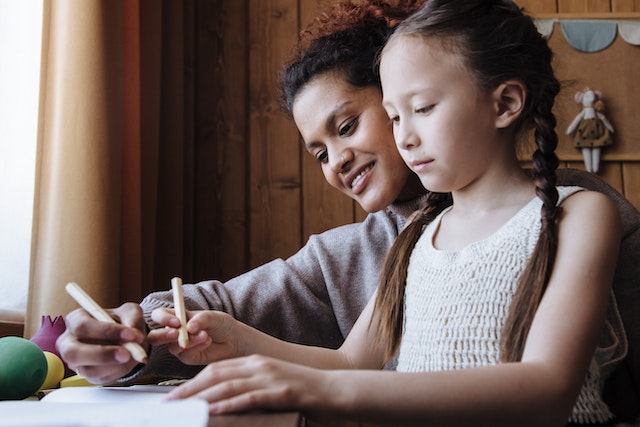- 1. Writing Thank You Notes to Others
- 2. Helping a Sibling with Homework
- 3. Painting Kindness Rocks with Messages
- 4. Making a Kindness Calendar
- 5. Reading Books, Poems, and Stories about Acts of Kindness
- 6. Kindness Cards for Kids
- 7. Appreciation Box for Family
- 8. Kind Acts Across History
- 9. Let’s Make a Kindness Song
- 10. Volunteering at an Animal Shelter
Developing the idea and expression of kindness in kids is vital for holistic development. Kindness activities for kids help demonstrate the concept of kindness through a hands-on and practical approach. Children can take away valuable lessons on how to practice kindness and in what circumstances kindness matters the most. They can also explore more nuanced ideas such as compassion, empathy, and forgiveness, through the introduction of proactive kindness activities.
Math & ELA | PreK To Grade 5
Kids see fun.
You see real learning outcomes.
Watch your kids fall in love with math & reading through our scientifically designed curriculum.
Parents, try for free Teachers, use for free
Let’s shift our focus to the best kindness activities for kindergarten that you can practice with your kids, and how to maximize their effectiveness through the right guided directions.
Introduce These 20 Amazing Kindness Activities for Elementary Students
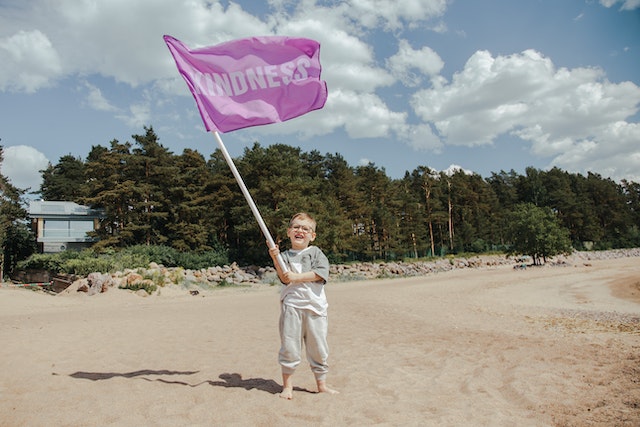
1. Writing Thank You Notes to Others

You can encourage your child to write “Thank You” notes to their teachers, friends, and family members whom they appreciate. They can focus on specific areas they appreciate the most and emphasize inherent traits through kindness. The activity can be performed during birthdays, before breaktime, or on any special occasion.
Ideal Age Range: 5+ years
Things Needed: Stationery
What to Remember: You should let them take the lead on making the card/note.
2. Helping a Sibling with Homework
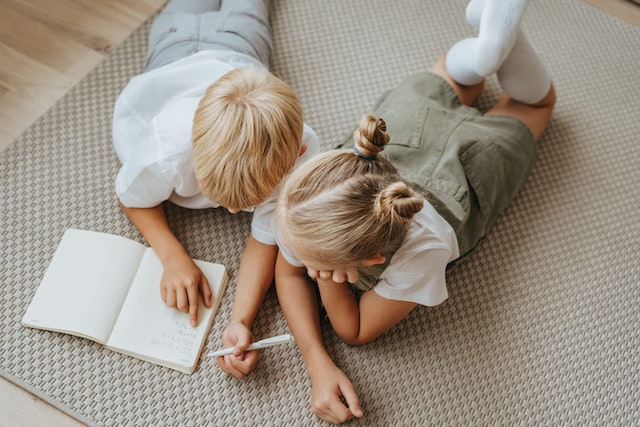
Your kids can help each other with their homework and learn about the role of kindness in interpersonal relationships. You can set the right habits in momentum by encouraging them to help their siblings when they can’t finish their homework. By establishing this activity each week, you can imbibe the right set of practices as they grow older.
Ideal Age Range: 6+ years
Things Needed: Guidelines
What to Remember: You can start by initiating an open dialogue about asking for and giving help.
Related Reading: Ways to Make Homework Fun for Kids
3. Painting Kindness Rocks with Messages
This is one of the best preschool kindness activities for toddlers that can be performed any time. You can encourage your children to paint rocks of different colors and set them aside to dry off. You can then write positive affirmations of kindness on them as reminders for the family to be kind and giving.
Ideal Age Range: 4+ years
Things Needed: Rocks, paint
What to Remember: You can have your kids come up with the affirmations that they like.
4. Making a Kindness Calendar
A kindness calendar with unique initiatives can help your child be more motivated to be kind to someone throughout the month. You can add simple acts such as setting the dinner table, cheering someone with a joke, and writing a friendly note.
Ideal Age Range: 5+ years
Things Needed: Calendar template
What to Remember: It’s important to let your child come up with kindness ideas.
5. Reading Books, Poems, and Stories about Acts of Kindness
A range of books about kindness, such as The Kindness Quilt, Finding Kindness, and The Big Umbrella, can be read aloud for kids to learn about the concept. You can make it more exciting for kids by role playing with dolls, toys, and puppets, giving your kids a multisensory experience with these kindness activities for kids.
Ideal Age Range: 3+ years
Things Needed: Reading-level based books
What to Remember: Reading out loud in a playful manner will engage kids more effectively
Related Reading: How to Read a Book: 15 Best Book Reading Tips for Children
6. Kindness Cards for Kids
You can prepare and print out a range of flashcards with acts of kindness on them. Your child can pick one and set out to complete the act at school, at the playground, and other places. Examples of these could be helping a friend who’s fallen, thanking a teacher, and sharing a snack with a friend.
Ideal Age Range: 6+ years
Things Needed: Kindness-based flashcards
What to Remember: You can focus on correcting certain behaviors with the right kindness card
7. Appreciation Box for Family
You can make an appreciation box for your family, encouraging everyone to write down words of appreciation for kindness driven actions. Your kids can learn to actively appreciate someone for being kind and share their feelings on paper.
Ideal Age Range: 5+ years
Things Needed: Small box, scissors, paint, cards
What to Remember: Encouraging your child to fill up the box regularly will keep them interested in the activity.
8. Kind Acts Across History
You can talk about kind acts throughout history, such as Princess Diana visiting hospitals, the Pay It Forward Movement, the brave acts of Oskar Schindler and so on. By talking about these acts of kindness, kids can feel a sense of community, history, and legacy around the idea of kindness.
Ideal Age Range: 5+ years
Things Needed: History books, lessons
What to Remember: You can ask your child to think about why a specific act was seen as kind worldwide.
9. Let’s Make a Kindness Song
If you have musically inclined kids, then encouraging them to create a song on kindness will be a great way to empower them creatively. You can ask them to create lyrics, melodies, and a dance step to go along with the song. The song can also focus on simple acts of kindness we can do every day.
Ideal Age Range: 6+ years
Things Needed: Instruments, lyrics
What to Remember: Having a dance routine will make the activity more joyful.
Related Reading: Children’s Songs When You Want to Dance With Your Kids
10. Volunteering at an Animal Shelter
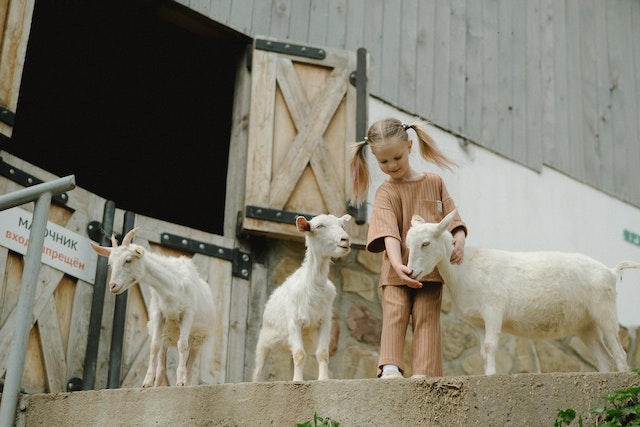
This is a great way to teach kids about the wonders of kindness and its reciprocation in the form of affection and love. Animals are highly intuitive and can help kids about being confident in approaching them based on body language. Your child can participate in feeding, cleaning, and hygiene activities at the shelter to teach them the value of responsibility through kindness.
Ideal Age Range: 5+ years
Things Needed: Scheduled visit
What to Remember: You can have them visit different types of animals to see if they form a natural bond.
11. Donating Books, Clothes, and Food
The inherent value of donating and doing something good for others can be the foundation of kindness for many kids. You can start teaching your children about the joy of giving through this kindness activity for kids. Kids can search in their own closet, toy chest, and other personal areas for things they’d like other children to have.
Ideal Age Range: 4+ years
Things Needed: Boxes, books, clothes, etc.
What to Remember: It’s important to focus on why it is good to donate things to other people.
12. Role Playing Exercises for Kindness
Role playing through toys, puppets, and dolls can be great ways to help kids understand kindness instinctively. You can enact different situations, such as a girl sitting by herself at the playground, a kid crying because he fell, and a student with no lunch to eat. Through these scenarios, you can help your child think through difficult situations and act with kindness.
Ideal Age Range: 4+ years
Things Needed: Toys, scenarios
What to Remember: Asking your child to think from the perspective of different people will help.
13. Filling Out Kindness Worksheets
You can create kindness worksheets that focus on various questions, such as “what is kindness to you?”, “How can I be more kind to my friends?”, “My family shows kindness by…,” etc. These types of worksheets can be helpful in letting kids think about kindness from a holistic standpoint. They can come up with their own answers and examples and complete the worksheets.
Ideal Age Range: 6+ years
Things Needed: Worksheet template
What to Remember: Preparing multiple worksheets will help them think about unique aspects of kindness.
14. Kindness for Nature
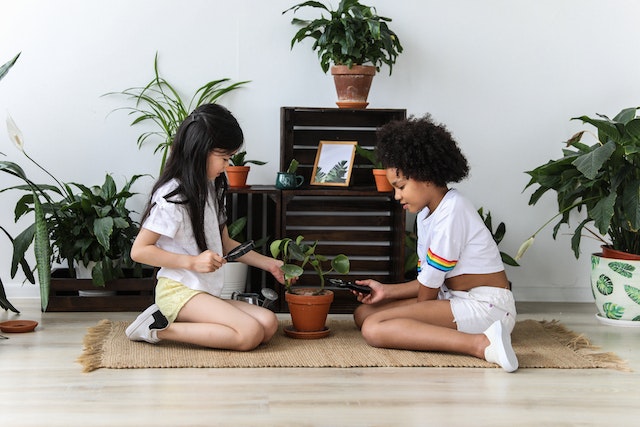
Nature-based kindness activities for kids can help them establish a closer relationship with the outside world. By empowering them to take care of a young plant, you can help them become more responsible and caring individuals.
Ideal Age Range: 4+ years
Things Needed: Seeds, pots, mud
What to Remember: It is important to talk to them about why we need to be kind to nature.
Related Reading: How to Make Gardening With Children Fun and Educational
15. The Kindness Tree
You can prepare a kindness tree by placing twigs in a glass jar and cutting out green paper in the form of leaves. You can ask your child about the various acts of kindness they showcased, write them down on the leaf, and then tie them symbolically on the twig. With each act of kindness, your child sees the tree grow and flourish with leaves all over.
Ideal Age Range: 4+ years
Things Needed: Twigs, stationery, strings
What to Remember: You can make this activity impactful by involving your child throughout the process
16. A Rainbow of Kindness
Crafts-based kindness activities for kids can help them make something unique and memorable around the idea of being kind. They can add the colors of the rainbow on seven ice cream sticks and write phrases that are polite and kind to say. Examples could be “Please,” “Thank you,” “I appreciate you,” etc.
Age Range: 5+ years
Things Needed: Ice cream sticks, colors, stationery
What to Remember: Focusing on why it is good to make someone feel good through kindness should be a key takeaway.
17. The Kindness Scenario: What Would You Do?
You can prepare different scenarios for your child to explore through the lenses of kindness and compassion. Your child can talk about what they would do in a situation, and you can track for inconsistencies or lack of action in different cases. This can also help your child understand when it’s right to be kind.
Age Range: 4 years +
Things Needed: Templates, cards
What to Remember: It’s vital to let your child take the lead on answering the questions posed.
18. I Am Thankful For – My Friends, My Family, My Sister
A key determiner of kindness is thankfulness, which can be practiced with the activity. You can write “I am thankful for” at the center of a sheet of paper and have your child write all the things they’re thankful for on the corners. They can choose to fill out the sheet of paper over time, making this a year-long record of kindness shown by others.
Age Range: 4+ years
Things Needed: Stationery
What to Remember: You can showcase examples of what you are thankful for to initiate the activity.
19. The Giving Jar for the Home
You can make a giving jar and encourage your kids to fill it up with things they’d like other members of the family to have. From sweets to toys, they can give away things they think would bring a smile on someone’s face or make someone’s day better.
Age Range: 6+ years
Things Needed: Glass jar
What to Remember: It is important to let your child organically give away things that they think will be helpful to others.
20. Handmade Gifts for Someone
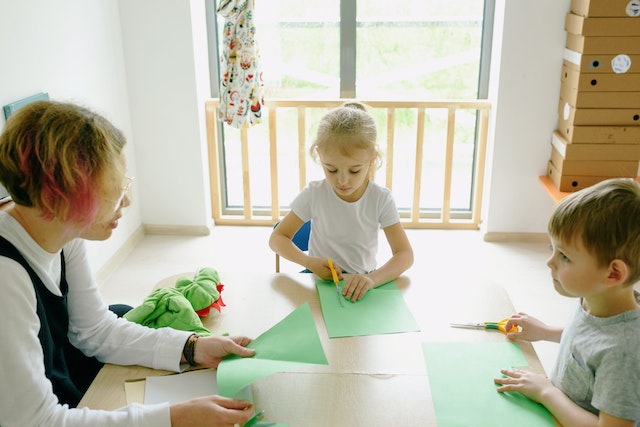
You can encourage your child to use Origami, arts and crafts, and other interesting ways to make handmade gifts. They can make hearts, hugs, toys, and other cool presents for their parents, friends, siblings, and grandparents.
Age Range: 5+ years
Things Needed: Stationery
What to Remember: Focusing on why it is good to make someone feel good through kindness should be a key takeaway.
Related Reading: Minute Best Crafts for Kids to Make at Home
Why Should We Indulge in Kindness Activities for Students?

Actively teaching kindness through instructions, guides, and activities helps kids proactively learn the concept from a theoretical and practical standpoint. Kids may feel certain emotions and want to help someone in need without vocalizing that expression as “kindness.”
It is also important to teach kids about kindness so that they can understand the concept through a practical lens. They can make the cognitive connection that certain actions are kind while others are unkind or rude. This helps them navigate the world better, treat their peers respectfully, and be more considerate about others’ feelings.
You can also mold your child to be more kind and giving with the right types of activities. More engaging outdoor activities for kids that involve kindness as a core virtue can teach them the right steps to practice each day. Kids can learn good behaviors through playful activities that allow them to explore different aspects of what it means to be kind.
Kindness is also a fruitful tool for social bonding in classrooms and developing lifelong relationships at an early age. Your child can be better socially adjusted at school and be more open to dynamic environments. They can actively recognize and reward kindness in other kids and become close friends with them by being more kind.
Exploring the Advantages of Teaching Kindness through Activities
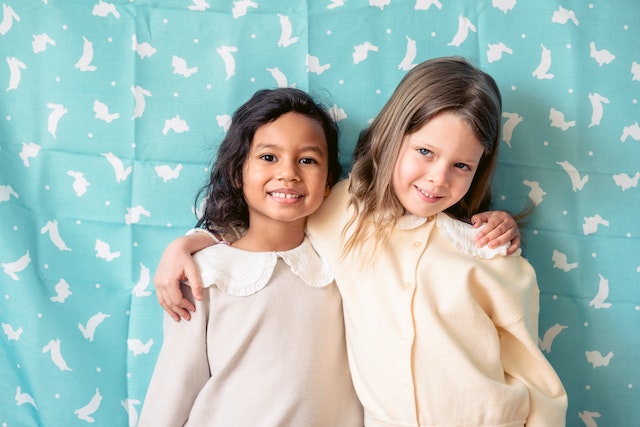
You can transform how your child sees the world by introducing kindness early. Your children can learn through kindness activities that are designed to help them think from different aspects.
By understanding and exploring different types of kindness gestures and actions, they can learn practical strategies for interacting with their surroundings. They can learn how to share toys, forgive their friends, appreciate their teachers, and make someone happy.
You can also empower your children with self-kindness, which is a direct predecessor to self-esteem. You can teach your kids to learn how to talk to themselves when they make a mistake or feel embarrassed about something. Through self-kindness, they can reshape their inner narrative to that of love, compassion, and forgiveness for shortcomings.
Related Reading: Best & Important Character Traits for Kids That All Parents Must Instill
Let’s Conclude
Kindness is a universal feeling, and kids can start learning about it early. Through kindness activities for kids, children can understand what it means to be kind and when it’s right to be kind to someone. You can also teach your children about the impact of kindness on our surroundings, society, and family through different activities that spark curiosity and engaged thinking.
What’s next? We can make these activities that much more impactful by making them a part of everyday activities and integrating them into play and during leisure time. Kids can understand the importance of kindness in our lives when they practice these activities every few days.
Here are more online educational resources for kids that will help with their learning experience and make them smarter.
Frequently Asked Questions(FAQs)
How often can I engage in kindness activities with my kids?
Weekly activities that focus on some form of kindness expression or extended one-off activities that grow over time can be impactful for young kids.
How can I make kindness activities more fun?
You can make kindness activities for kids more fun by involving toys, musical instruments, videos, and other multi-sensory tools. You can also continue to introduce new activities regularly to make it more fun for kids.
How do I explain the differences between kindness, compassion, and empathy?
By focusing on role-playing activities, guides, books, and songs, you can teach the differences between kindness, compassion, and empathy.
At what age can kids learn about kindness?
Kids as young as the age of three years can understand the concept of kindness at a rudimentary level.

















